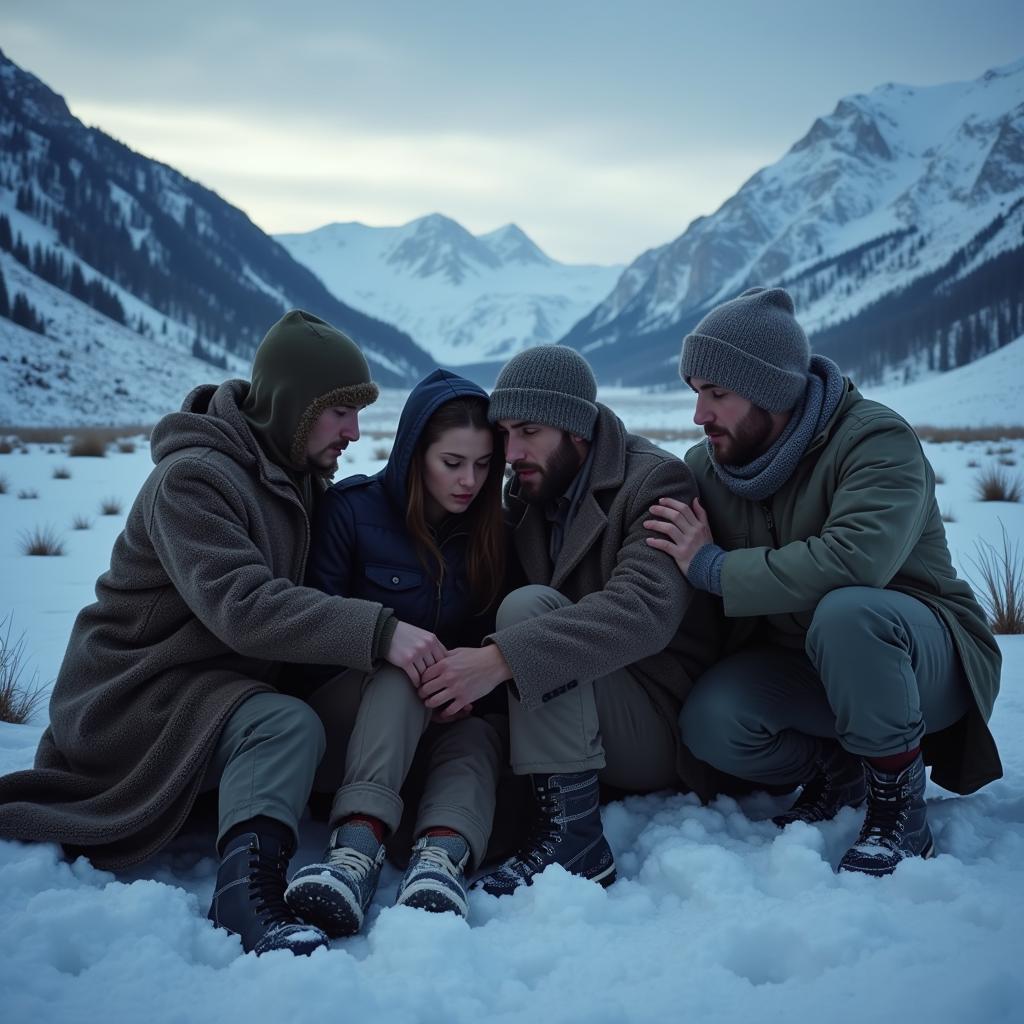The gripping story of Uruguayan Air Force Flight 571’s crash in the Andes mountains has captivated audiences for decades. Understanding the “Society Of The Snow Filming Location” adds another layer to this remarkable tale of survival. The extreme conditions faced by the survivors, their resilience, and the difficult choices they made all contribute to the story’s enduring power.
Where Was Society of the Snow Filmed? Recreating the Andes on Screen
Capturing the harsh reality of the Andes mountains for “Society of the Snow” required meticulous planning and a dedicated film crew. While some scenes were filmed in the actual Andes, near the original crash site, the majority of the filming took place in other locations chosen to accurately depict the challenging environment. These substitute locations allowed for greater logistical control and safer filming conditions, while still maintaining the visual integrity of the story.
The film’s producers sought locations that could authentically replicate the high altitude, snow-covered terrain, and treacherous landscapes. This meant scouting areas with similar geological features and weather patterns. The chosen “society of the snow filming locations” allowed the filmmakers to recreate the isolation and vulnerability experienced by the survivors.
The Importance of Authenticity in Depicting the Society of the Snow Story
Choosing the right filming locations is crucial to conveying the emotional weight of the society of the snow story. The physical environment played a significant role in the survivors’ struggle, and accurately portraying this setting is essential to understanding their ordeal. The visual impact of the mountains, the vastness of the snow-covered landscape, and the sense of isolation all contribute to the narrative’s power. Authenticity in depicting the setting helps to connect viewers with the emotional and psychological challenges the survivors faced.
Filming in environments that closely resemble the original crash site enhances the viewers’ immersion in the story. It allows them to visualize the harsh conditions, the limited resources, and the constant threat of the elements. This visual realism strengthens the emotional connection to the characters and their experiences.
Exploring the Challenges of Filming in Extreme Conditions
Filming in high-altitude, snowy locations presents numerous logistical challenges. The weather can be unpredictable, changing rapidly from clear skies to blizzards. The terrain is often difficult to navigate, requiring specialized equipment and experienced crews. The thin air can also pose health risks to the cast and crew, requiring careful acclimatization and medical monitoring. Overcoming these challenges is essential to capturing the raw beauty and inherent dangers of the Andes mountains.
The dedication of the film crew to recreate the environment accurately demonstrates a commitment to honoring the society of the snow filming locations. Their efforts contribute to the overall impact of the film and the way it resonates with audiences.
The Impact of the Andes on the Survivors’ Story
The Andes mountains are more than just a backdrop to the story; they are an integral part of it. The landscape shaped the survivors’ experiences, tested their limits, and ultimately played a role in their survival. The isolation, the cold, and the vastness of the mountains contributed to the psychological and emotional toll of the crash. Understanding the environment is essential to understanding the choices the survivors made and the bonds they forged.
The “society of the snow” refers to the unique community formed by the survivors, bound together by their shared ordeal and their reliance on one another for survival. The mountains themselves became a silent witness to their struggles, their resilience, and their unwavering hope.
Dr. Elena Ramirez, a survival psychologist, explains, “The extreme environment of the Andes amplified the psychological pressures on the survivors, forcing them to confront their own vulnerabilities and rely on each other in unprecedented ways.”
 Society of the Snow Andes Survivors
Society of the Snow Andes Survivors
Conclusion: The Power of Place in Society of the Snow
The “society of the snow filming location” plays a vital role in bringing this remarkable story to life. By carefully selecting locations that mirror the harsh reality of the Andes, the filmmakers enhance the emotional impact of the narrative and offer viewers a deeper understanding of the survivors’ experience. The film serves as a testament to the human spirit’s capacity for resilience and the enduring power of hope in the face of adversity. The careful attention to the setting reminds us that the mountains themselves are a character in this story, shaping the lives of those who dared to challenge their unforgiving beauty.
FAQ
- Where can I watch “Society of the Snow”? Streaming availability will be announced soon.
- Is “Society of the Snow” based on a true story? Yes, it is based on the true story of Uruguayan Air Force Flight 571.
- What are some other films about survival? “Alive,” “127 Hours,” and “The Revenant” are other notable survival films.
- What is the significance of the title “Society of the Snow”? It refers to the unique community formed by the survivors in the Andes.
- What were the main challenges faced by the survivors? Extreme cold, hunger, avalanches, and the psychological toll of isolation.
- Where did the plane crash occur? The Andes mountains, on the border between Argentina and Chile.
- How long were the survivors stranded? 72 days.
Do you have other questions about the story of survival in the Andes? Explore these related articles on our website: society of the snow filming locations and society of the snow story.
Need support? Contact us 24/7: Phone: 02043854663, Email: [email protected], or visit us at Khu 34, Bac Giang, 260000, Vietnam.